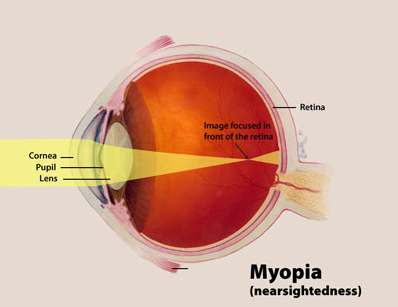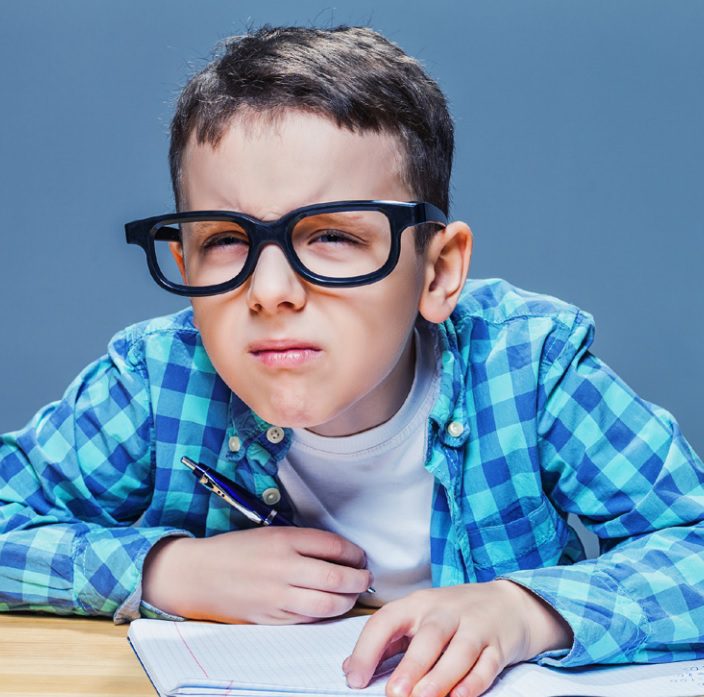What is Myopia?
Myopia (my-OH-pea-uh), or nearsightedness, is a type of refractive error. Myopia is a vision condition in which distant objects appear blurred – such as roadway signs, the board at school, faces, or the television set across the room. In severe myopia, both distant and near objects are blurry.
In more severe myopia, both distant and near objects are blurry. Individuals with more severe myopia must bring objects close to their eyes to see those objects clearly if they do not wear glasses or contact lenses.
The good news is that myopia can usually be corrected with glasses or contact lenses.
 Myopia (nearsightedness) – the lens of the eye focuses light in front of the retina instead of directly on the retina.
Myopia (nearsightedness) – the lens of the eye focuses light in front of the retina instead of directly on the retina.
Myopia (Nearsightedness) – What Parents Need to Know
Kira Baldonado, Vice President of Public Health and Policy at Prevent Blindness discusses Myopia (Nearsightedness) with Lauren C Ditta, MD, Pediatric Neuro-Ophthalmologist at Le Bonheur Children’s Hospital and Associate Professor of Ophthalmology and Pediatrics at Hamilton Eye Institute, University of Tennessee Health Science Center.
Why is myopia a problem?
- Uncorrected myopia can make it difficult for a child to learn, engage socially, or fully participate in activities.
- Severe myopia can also lead to sight-threatening complications such as glaucoma, cataract, and retinal detachment in addition to problems seeing clearly in adult life.
When and how does myopia develop?
- Research shows that myopia is triggered by a combination of genetic (inherited) and environmental (outdoor and physical activity) factors.
- How children play and study can increase the chances that they develop myopia or, if a child already has myopia, that it may become worse. Studies have found
- Children who spend many hours doing close visual work, such as using electronic devices (computers, tablets, and cell phones), have a higher risk of developing myopia.
- Children who spend time outside with exposure to sunlight may have a lower risk of myopia becoming worse.
Myopia Diagnosis
An ophthalmologist (an eye doctor with a medical degree: MD or DO) or an optometrist (an eye doctor with an OD degree) will conduct an eye examination to find out if you have myopia.
Myopia Treatment
A range of treatments are available and more research is being done. Your ophthalmologist or optometrist will work with you to identify the right treatment. This may include eyeglasses, contact lenses, or other treatments to help you see clearly or to slow the worsening of myopia.


